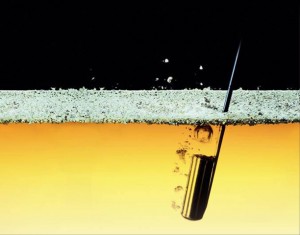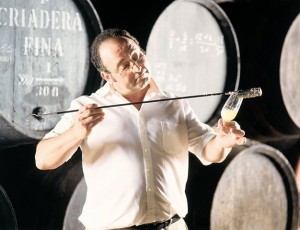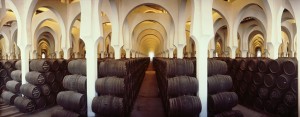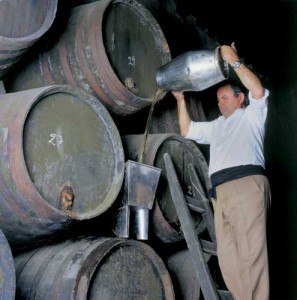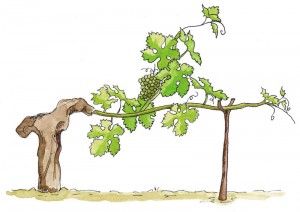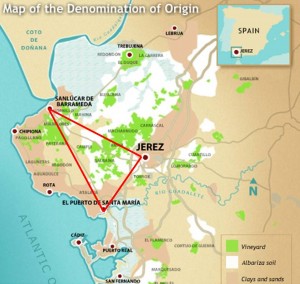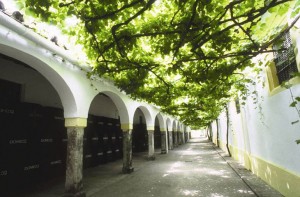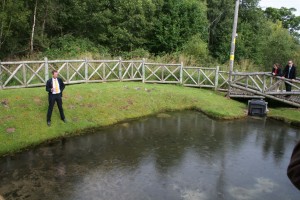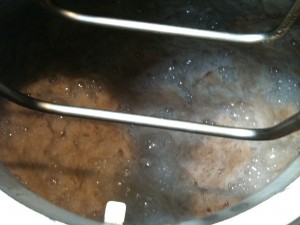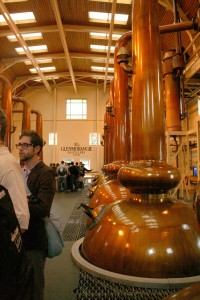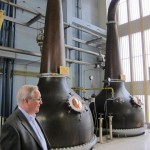Bringing the Bodega Back (Sherry) Part III
17 Sep
In Part II, I summarized what our class learned of the process Sherry goes through prior to aging from Katie Stipe and Phil Ward. In Part III, I will attempt to summarize what they taught us about the Sherry aging process.
Although in the past various vessels were used for transportation and aging, today the vast majority of Sherry aging takes place in bodega butts (barrels). These are composed of American oak with a 600L capacity and have been wine seasoned in order to limit any wood effect on the wine’s flavor.
As mentioned earlier, usually “two fists” of airspace is left in the barrel to allow the flor to develop. These barrels absorb water from the Sherry at a rate of up to 3-5%/year, depending on the bodega’s humidity. The result is a concentrating of all the other components in the wine. Minimum aging according to the regulations of the DOM is 3 years.
The first 6-12 months of aging in barrel is referred to as sobretablas stage. (The fortified olorosos, as designated in the first classification, may skip this step and be introduced immediately into the next stage of aging or stored in what is called añadas. Over the course of the year, the young olorosos in añadas will be gradually introduced into the next stage of aging in the process called trasiego.)
This stage is most important for the wines initially designated finos and fortified to 15%. How they develop during sobretablas determines the wine style that will emerge at the final stage of production. The first classification was completed after only a couple weeks. The second takes place at the end of sobretablas and the tasters have a couple more options for classification available.
If the flor film on the wine in the butt has flourished, the wine retains or enhances its finesse and paleness, and has begun to exhibit the characteristics of biological aging under flor, it is again classified as fino and marked as such (/).
Some wines, while deemed suitable to continue biological aging as fino, are determined to have very special characteristics which vary according to house style. They are classified and marked as palo cortado (/). Although these wines may spend some more time in sobretablas under flor, they will eventually be further fortified to 17% ABV. The flor will die and the palo cortado will begin its second aging process, oxidative aging.
If for any reason the flor film has begun to fade or has disappeared completely at the end of sobretablas, the wine initially considered suitable for biological aging is re-classified. It is marked as oloroso(0), fortified to 17%, and also begins its second, oxidative aging process.
Finally, some wines are deemed unworthy of becoming Sherry in the second classification. They may be too high in acidity or may exhibit other unsuitable characteristics. These are marked (#) and are removed from the Sherry production process.
With the second classification complete, Sherry moves into the “Criaderas y Solera” aging system. As mentioned in Part I, this system arose after the Vintner’s Guild was abolished in the late 18th century to create a consistent aged wine from various vintages. It is now the traditional aging process for Sherry. It is also vital for the fino and manzanilla Sherries that must undergo biological aging for at least 3 years. This will become apparent after the Criaderas and Solera process is understood.
The Criaderas and Solera system is a fractional blending system where younger wines are blended into older wines. The oldest, finished Sherry is contained in the first tier of butts resting on the floor called the “Solera”. Solera is derived from the word “suelo” (floor). On top of the Solera are usually another 2-8 tiers of butts, depending on the bodega, age and type of Sherry. These are called “Criaderas” (nurseries). The 1st Criadera is closest to the Solera, the 2nd Criadera is above the 1st Criadera, and so on.
When finished Sherry in the Solera butts is removed for bottling in the process called “saca” (taking out), it creates space in each butt for replenishing with Sherry from the 1st Criadera butts. In turn, the 1st Criadera is replenished from the 2nd Criadera, and so on until the final Criadera on top is replenished from Sherry having just finished the Sobretablas stage. The process of replenishing is called “rocio” (sprinkling). Between the rocio and saca process, Sherry from each of the butts of a particular Criadera are blended together for consistency. The entire process is called “correr escalas” (running the scales).
Running the scales is very specialized work done using traditional methods. The workers must be careful during the saca and rocio not to overly disturb the flor on top of the Sherry or the “cabezuelas” (fine lees) at the bottom of the barrel.
Conversely, running the scales will cause additional oxygen to become dissolved into the Sherry during the transfer process. This is advantageous. The small amount of extra oxygen helps the flor in the oldest fino and manzanilla Sherry’s to regain its vitality. It will also slightly accelerate the process in the Sherry undergoing oxidative aging, .
In addition to oxygen and alcohol, flor requires other micronutrients found in the fino and manzanilla Sherry. Without being “refreshed” by younger Sherry from the Criaderas, the flor in the Solera butts would eventually consume all the micronutrients, begin to fade, and allow oxidation of the wine. This is why biological aging for Sherry would not be possible without the Criaderas and Solera system.
The average age period of the Sherry in the Solera is determined by dividing the total volume of Sherry in the Criaderas and Solera system by the amount that is removed annually for bottling. Since the minimum age for all Sherries is 3 years, a maximum of 1/3 of the total volume of Sherry in the system can be bottled annually. For example, if the age statement on the bottle is 12 years, there must have been at least 12 L in the Criaderas and Solera for every 1 L removed from the Solera for bottling.
Part IV will summerize the final classifications of Sherry and briefly discuss Sherry in cocktails.



